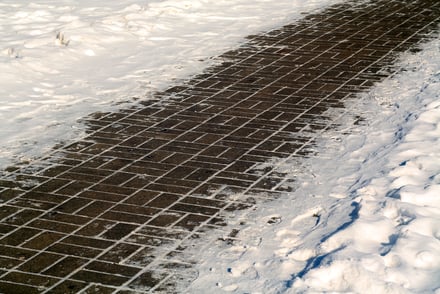Renaissance Development, a leader in brick restoration and historic preservation, specializes in the restoration of a historic brick building’s mortar joints using traditional methods (tuckpointing) and materials. Contact us for a free site visit and project quote.
Owners of historic DC brick homes have likely heard of tuckpointing. Also known as repointing, it is the process by which the facades of brick structures are restored and maintained. Even the most savvy owners of historic homes may not know the right way to handle upkeep of a historic building’s masonry.
There’s so much more to a tuckpointing restoration than replacing mortar. In DC brick mortar repair is one tool for historic preservation. Maintaining these centuries-old structures requires traditional methods and materials. There is a right way to handle the upkeep of a historic building’s masonry.
Here are four things a homeowner should know about tuckpointing old brick:
1. Old brick is softer than brick manufactured today. The load-bearing exterior walls of historic homes were built of coal-fired clay bricks assembled with lime mortar. The composition, texture, and strength – or level of hardness – of historic mortar are completely different from cement or concrete, which are modern building materials suited for new construction.
2. When tuckpointing old brick, the mortar MUST be softer (in compression strength) than the brick. Moisture within a wall needs to escape and evaporate. Mortar that is too hard will force the moisture to escape through the softer brick or stone. This will result in permanent damage such as cracking and spalling.
3. If a historic building is tuckpointed with cement, that modern material’s extreme density – or its level of hardness – will cause the softer coal-fired bricks to crack. If a historic building is not tuckpointed properly, it will eventually show signs of structural damage and interior water penetration.
4. Many homeowners and some building professionals consider “spot tuckpointing”— filling holes with cement only where damage is most apparent. This may sound like a reasonable repair, especially because it is quick and can be inexpensive. Although this practice is common and visible all over Washington, spot tuckpointing is merely a band-aid approach that will neither stabilize a building nor halt its continued deterioration.
Because of the era in which so many homes were built in Washington DC , tuckpointing brick in these historic buildings should be trusted to experts in the correct application of traditional materials and methods.
Jul 25, 2017 1:33:27 PM



